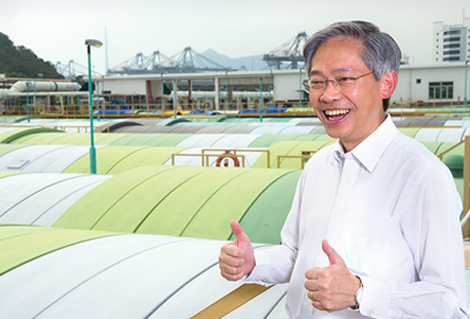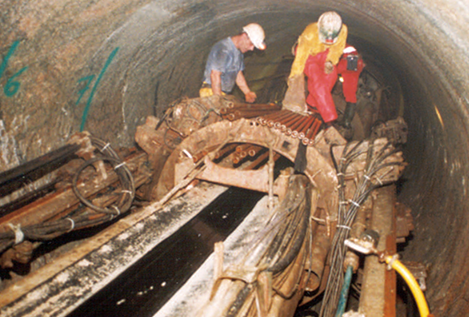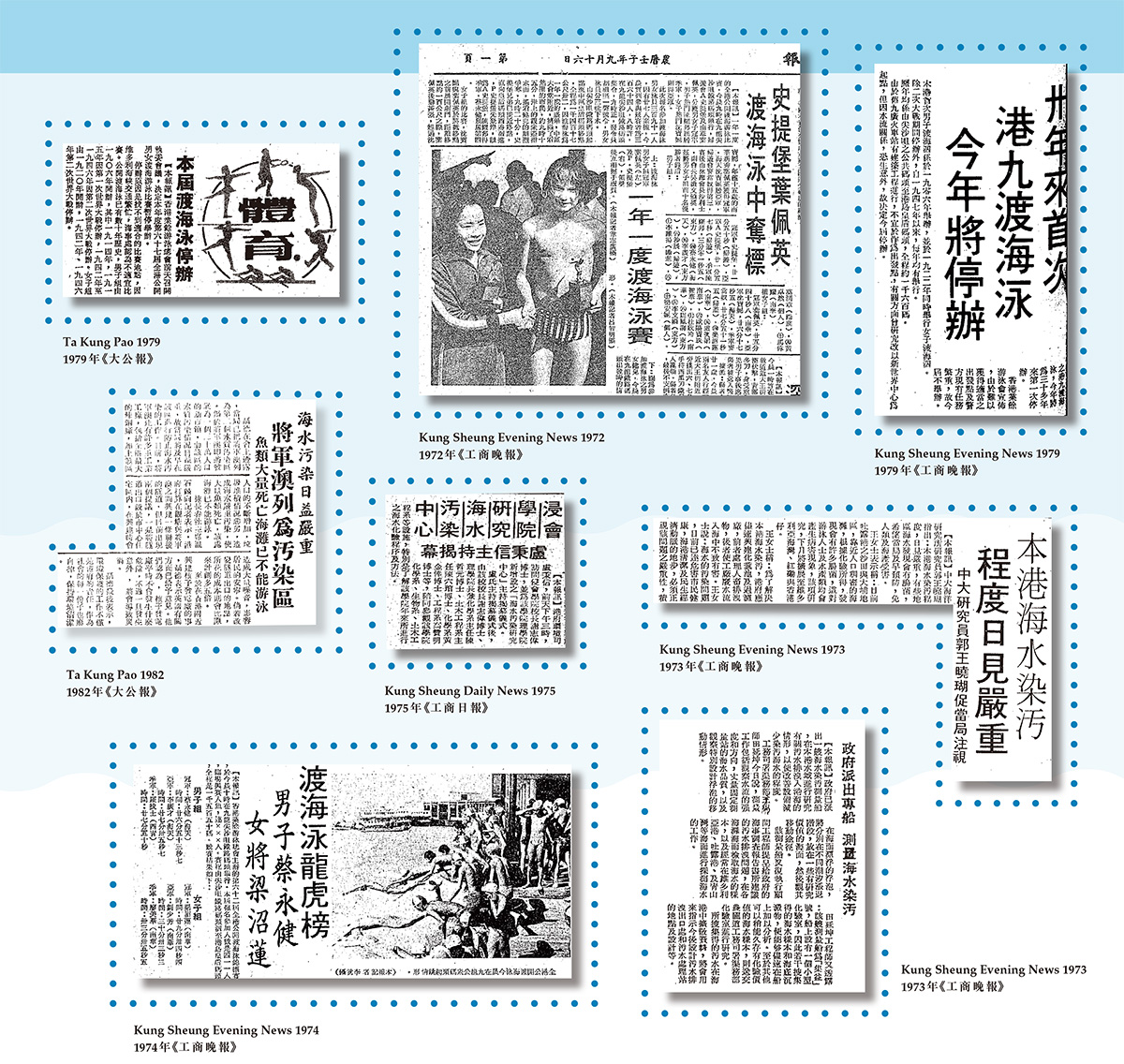
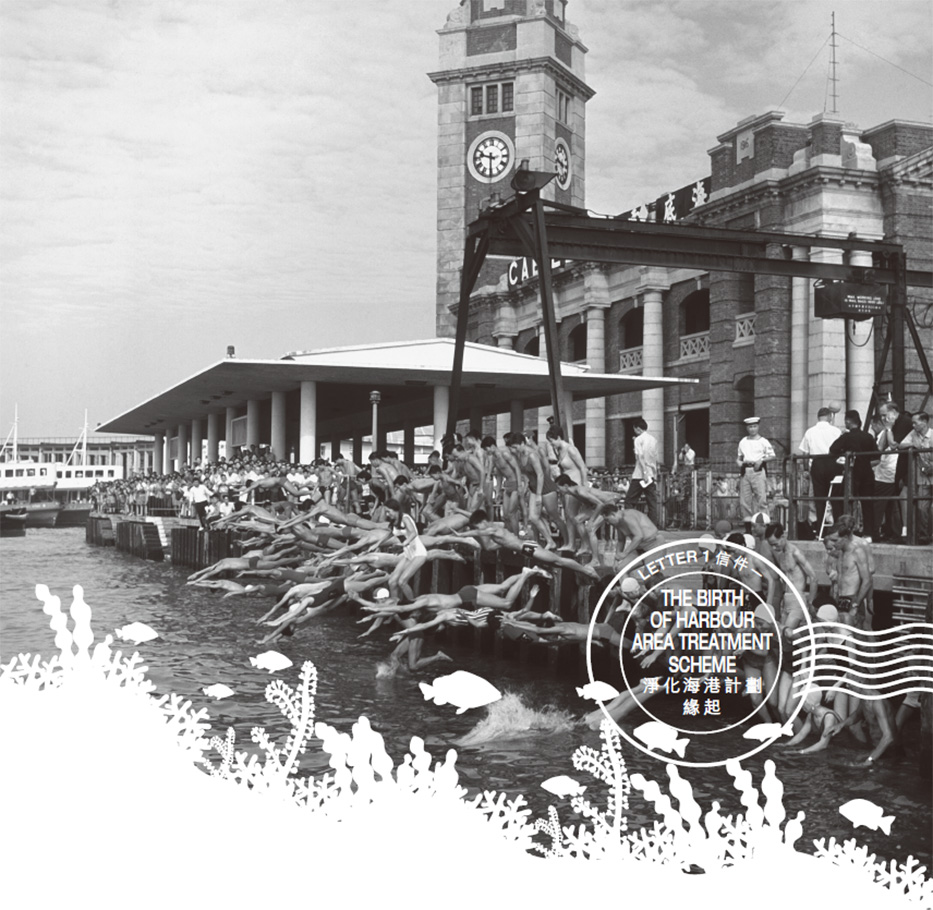

The Government embarked on the Sewage Strategy Study in 1987

The Government published “White Paper: Pollution in Hong Kong” in 1989
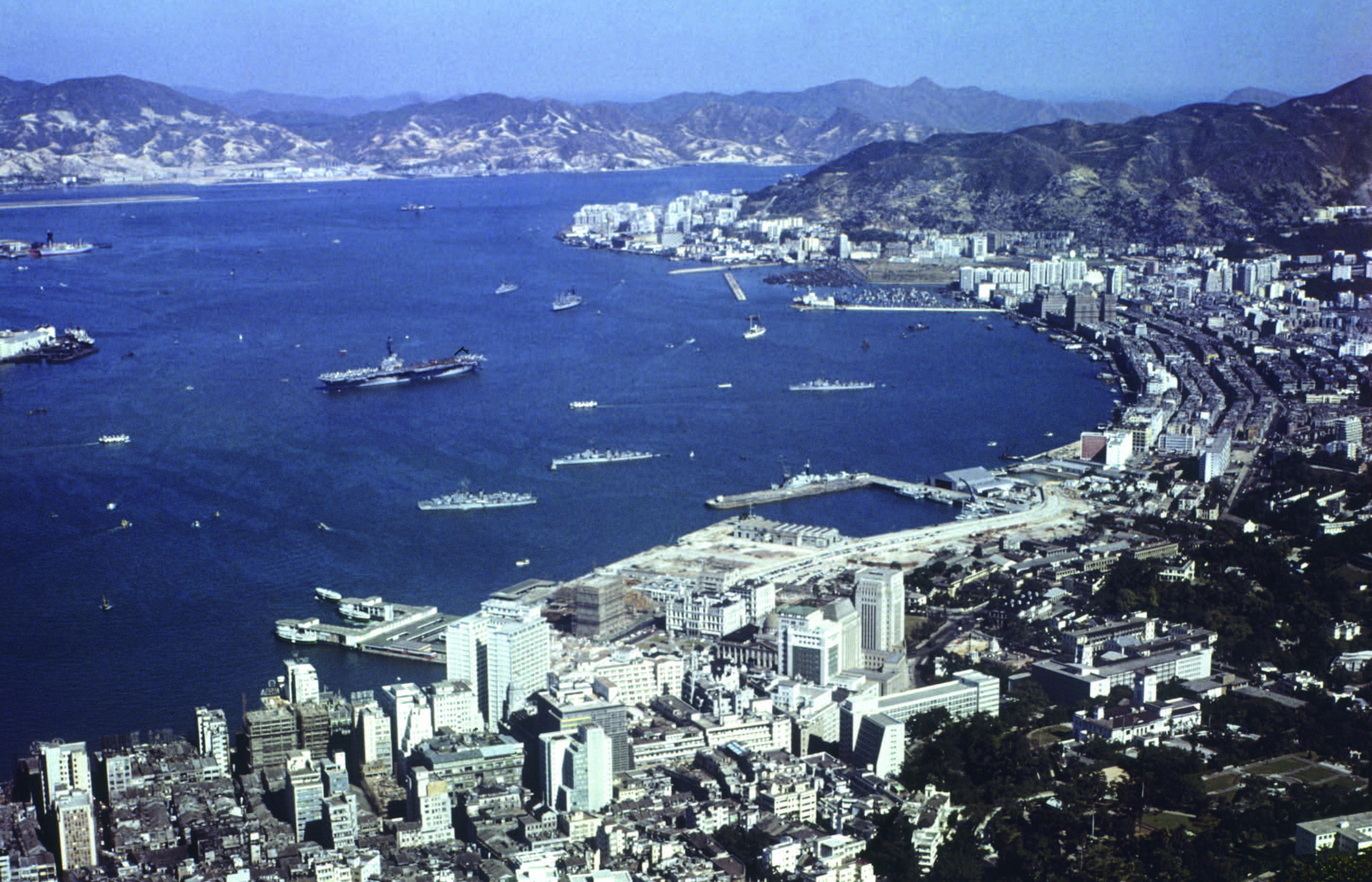
Victoria Harbour in the 1960s
Dear Harbour,
This is the first of a series of letters from us at Drainage Services Department to our dear, fragrant Victoria Harbour. A symbol of Hong Kong and renowned for your deep waters and strategic location, you have made our city a leading port and a major financial centre. From a traditional shelter for seafaring merchants to a thriving world city, Hong Kong owes its prosperity and international reputation to our Harbour. You have witnessed centuries of history and changes in a place that has become our city today. But our city has changed You too.
For hundreds of years, your fast moving currents had very good self-cleansing capacities to dilute pollutants from human activities. But with the rapid growth of population and industries, harbour pollution came to the fore in the 1970s when you lost much of your beauty and fragrance to water pollution.
These letters have been written for You, dear Harbour, to tell the story of a mega environmental infrastructure project called the Harbour Area Treatment Scheme, or HATS, on which our team has worked tirelessly for over 20 years to restore the beauty, fragrance and vitality of Victoria Harbour.
Background
Up to the 1980s, untreated or preliminarily treated sewage was directly discharged into the Harbour which had certain self-cleansing capacities, but only up to a point. Once its self-cleansing capacities were exceeded, our aquatic environment became unhealthy for marine lives, ending up with polluted beaches, red tides, contaminated sea food and visual impacts.
Another problem was the widespread connection of wastewater discharges from industry, restaurants and residential accommodation directly to stormwater drains instead of to foul sewers, giving rise to black water and stink in waterfront areas. Victoria Harbour was in crisis.
In response to the situation, the Government embarked on the Sewage Strategy Study (SSS) in 1987, mapping out an overall sewage treatment strategy for Hong Kong, including the Strategic Sewage Disposal Scheme (SSDS), later renamed the Harbour Area Treatment Scheme (or HATS) in 2001 to abate Harbour water pollution.
As a policy initiative of the “White Paper: Pollution in Hong Kong — a Time to Act”, the Drainage Services Department (DSD) was also established in 1989, responsible for the provision and management of wastewater treatment and stormwater drainage infrastructures in Hong Kong, including the implementation of HATS. The HATS project was born.

Initial Plan
The initial SSDS plan in the early 1990s had four stages. Three of them were duly implemented under HATS, while the ocean outfall system under the original Stage II was replaced by an alternative arrangement, detailed in our next letters.
HATS Today
These days, Victoria Harbour is clean again, its vitality revived. Once heavily polluted beaches have re-opened. Coral has been found again in the harbour. The Cross Harbour Race, a signature annual event in Hong Kong dating back to 1906 but suspended in 1978 because of harbour pollution, resumed in 2011 in the harbour east and finally returned to the central part of the harbour in 2017 — a testament to the harbour’s now revived good water quality.
So, what exactly has HATS done? Put simply, HATS has put in place an infrastructure that has successfully reduced and contained the polluting effects of many decades of urban development on both sides of our Harbour. To date, two stages of HATS, namely Stages 1 and 2A, have been commissioned.
Stage 1 comprised the construction of the Stonecutters Island Sewage Treatment Works (SCISTW) as a hub of centralised sewage treatment facilities, along with 23.6 kilometres of deep tunnels for collecting sewage from Kowloon, Kwai Tsing, Tseung Kwan O, and north-eastern Hong Kong Island and upgrade of seven existing preliminary treatment works (PTWs). Stage 1 began works in 1994 and was commissioned in December 2001, providing treatment to 75% of sewage from both sides of the harbour.
Stage 2A provides treatment to the remaining 25% of sewage from the northern and south-western parts of Hong Kong Island. Works included the construction of 21 kilometres of deep sewage tunnels to the SCISTW, along with the upgrade and expansion of the original SCISTW facilities and eight existing PTWs. Stage 2A commenced its major works in 2009 and was commissioned in December 2015.
Stages 1 and 2A together can treat a total of 2.45 million cubic metres of sewage per day, serving ultimately up to 5.7 million people in 10 districts on both sides of Victoria Harbour. Since the commissioning of Stage 2A, all sewage collected from both sides of the harbour is treated and disinfected at the centralised SCISTW treatment facilities before discharged through an outfall.
Soon after Stage 2A commissioning in December 2015, the Environmental Protection Department confirmed in its 2016 Marine Water Quality Report substantial improvement in harbour water quality compared to 2011-2015, and most notably a 10-fold reduction in overall E. coli count compared to the late 1990s.
So, dear Harbour, this is the gist of the HATS story. More to follow in the next letter.
POSTSCRIPT
“The most difficult days of HATS were encountered during Stage 1. Soon after the tunnelling works commenced, the contractor unreasonably withdrew from the sites and works came to a halt. The government team came under enormous public pressure and faced the dilemma of abandoning the project or pressing on. However, we believed that persevering with HATS would benefit millions of people in Hong Kong and decided to press ahead against all odds to complete the project.”
“If Victoria Harbour was once polluted and sick, it can now be described as having almost fully recovered.”
HON Chi-keung
Former Permanent Secretary for Development (Works),
Development Bureau

